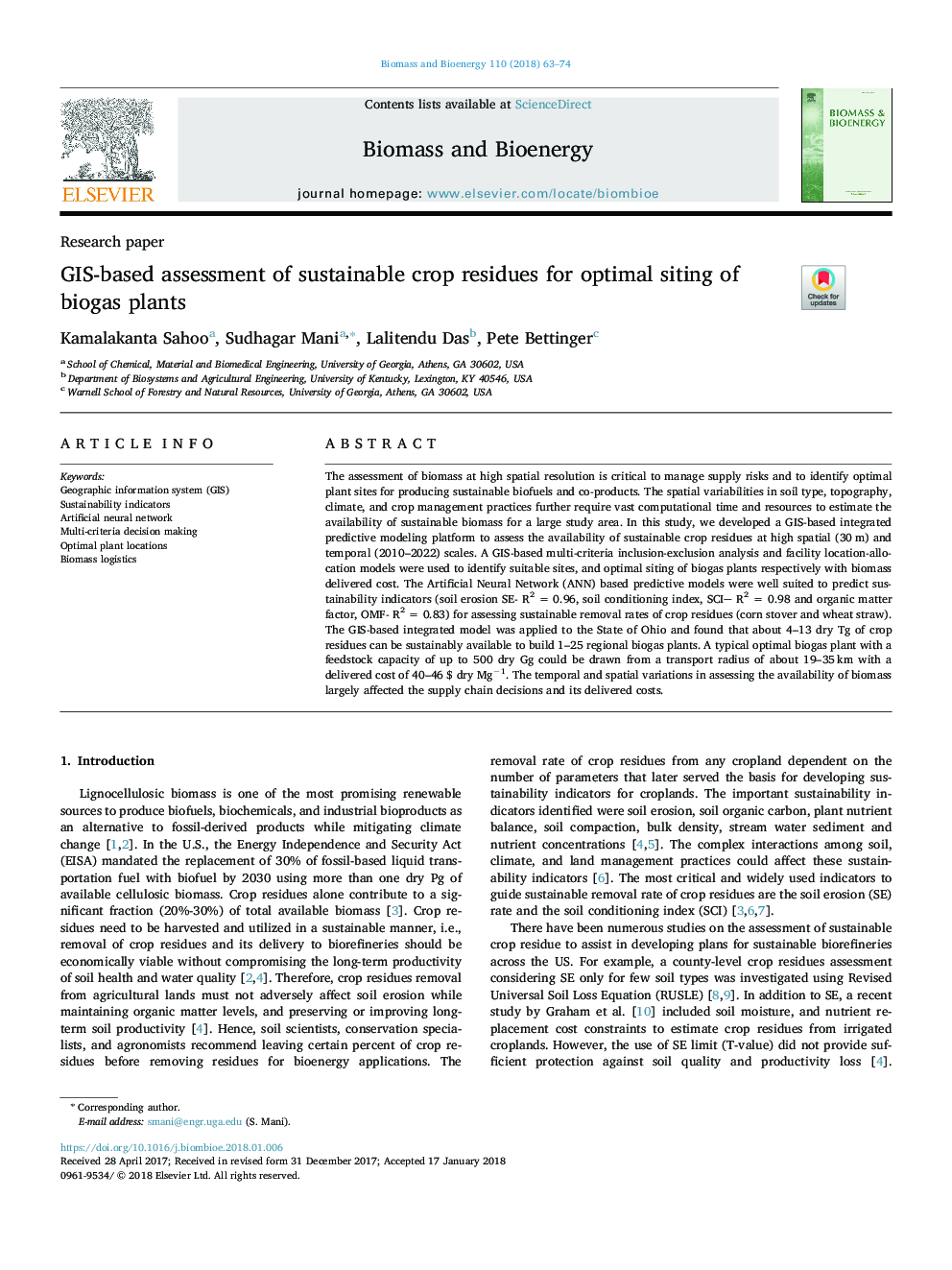| Article ID | Journal | Published Year | Pages | File Type |
|---|---|---|---|---|
| 7062999 | Biomass and Bioenergy | 2018 | 12 Pages |
Abstract
The assessment of biomass at high spatial resolution is critical to manage supply risks and to identify optimal plant sites for producing sustainable biofuels and co-products. The spatial variabilities in soil type, topography, climate, and crop management practices further require vast computational time and resources to estimate the availability of sustainable biomass for a large study area. In this study, we developed a GIS-based integrated predictive modeling platform to assess the availability of sustainable crop residues at high spatial (30â¯m) and temporal (2010-2022) scales. A GIS-based multi-criteria inclusion-exclusion analysis and facility location-allocation models were used to identify suitable sites, and optimal siting of biogas plants respectively with biomass delivered cost. The Artificial Neural Network (ANN) based predictive models were well suited to predict sustainability indicators (soil erosion SE- R2 = 0.96, soil conditioning index, SCI R2 = 0.98 and organic matter factor, OMF- R2 = 0.83) for assessing sustainable removal rates of crop residues (corn stover and wheat straw). The GIS-based integrated model was applied to the State of Ohio and found that about 4-13 dry Tg of crop residues can be sustainably available to build 1-25 regional biogas plants. A typical optimal biogas plant with a feedstock capacity of up to 500 dry Gg could be drawn from a transport radius of about 19-35â¯km with a delivered cost of 40-46 $ dry Mgâ1. The temporal and spatial variations in assessing the availability of biomass largely affected the supply chain decisions and its delivered costs.
Keywords
Related Topics
Physical Sciences and Engineering
Chemical Engineering
Process Chemistry and Technology
Authors
Kamalakanta Sahoo, Sudhagar Mani, Lalitendu Das, Pete Bettinger,
